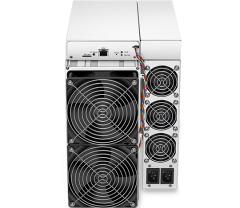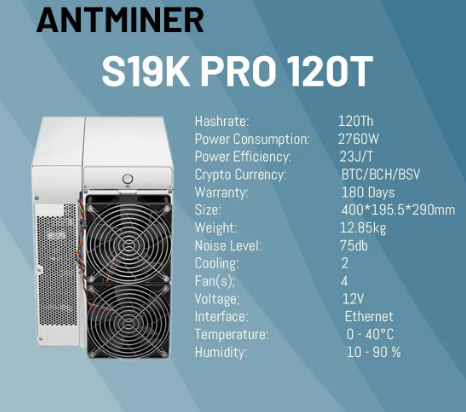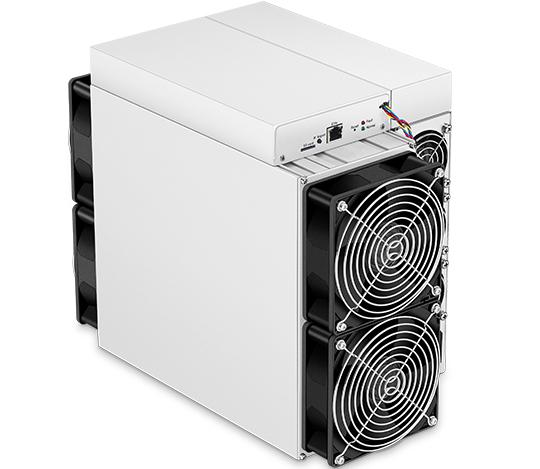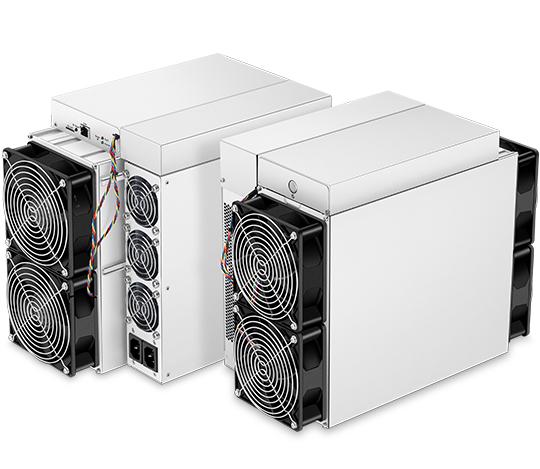How to Clean and Maintain Your Bitcoin Miner S19k Pro for Optimal Performance
Cryptocurrency mining is a competitive and resource-intensive endeavor, and the efficiency of your mining hardware plays a pivotal role in your overall profitability. Among the most advanced mining devices available today is the Bitcoin Miner S19k Pro, a powerhouse developed by Bitmain, renowned for its 120 TH/s hashrate and industry-leading energy efficiency of 23 J/TH. However, even the most robust mining equipment requires regular cleaning and maintenance to ensure it operates at peak performance. In this guide, we’ll walk you through the essential steps to clean and maintain your S19k Pro, helping you maximize its lifespan and profitability.
Why Cleaning and Maintenance Matter
The S19k Pro is designed to handle demanding mining environments, but dust, debris, and heat can significantly impact its performance over time. Accumulated dust can clog fans and heat sinks, leading to overheating and reduced efficiency. Regular maintenance not only prevents these issues but also helps you identify potential hardware problems before they escalate, saving you time and money in the long run.

Step 1: Preparing for Maintenance
Before diving into the cleaning process, take the following precautions to ensure safety and avoid damaging your miner:

- Power Down the Miner: Always turn off and unplug the S19k Pro before performing any maintenance. This prevents electrical hazards and protects the device from accidental damage.
- Gather the Right Tools: You’ll need compressed air, a soft brush (like a paintbrush or anti-static brush), isopropyl alcohol (90% or higher), microfiber cloths, and a screwdriver set.
- Work in a Clean Environment: Perform maintenance in a dust-free area to prevent additional contamination during the cleaning process.
Step 2: Cleaning the Exterior
Start by addressing the exterior of the S19k Pro, which is prone to dust buildup:

- Wipe Down the Casing: Use a microfiber cloth lightly dampened with isopropyl alcohol to wipe the outer surfaces. Avoid using excessive liquid, which could seep into the internal components.
- Clean the Ventilation Grilles: Dust often accumulates on the grilles that allow airflow into the miner. Use a soft brush or compressed air to remove debris gently.
Step 3: Cleaning Fans and Heat Sinks
The fans and heat sinks are critical components that keep the S19k Pro cool during operation. Over time, dust can obstruct airflow, leading to overheating and reduced performance:

- Remove the Fan Covers: Use a screwdriver to carefully remove the fan covers. Keep the screws in a safe place to avoid losing them.
- Clean the Fans: Hold the fan blades in place and use compressed air to blow away dust. Avoid spinning the blades with compressed air, as this can damage the fan motor.
- Clear the Heat Sinks: Heat sinks are often packed with dust. Use compressed air to blow out debris, working from the top down to ensure thorough cleaning.
Step 4: Inspecting Internal Components
While the S19k Pro’s modular design makes it relatively easy to maintain, it’s still important to inspect internal components periodically:
- Check for Loose Connections: Ensure all cables and connectors are securely attached. Loose connections can cause performance issues or even hardware failure.
- Inspect the Power Supply Unit (PSU): Look for signs of wear, such as frayed cables or burn marks. If you notice any damage, replace the PSU immediately.
- Examine the Hashboards: The hashboards are the heart of the miner. Inspect them for visible damage or corrosion. If you suspect an issue, consult Minerfixes or Bitmain’s support team for professional assistance.
Step 5: Reassembling and Testing
Once cleaning and inspection are complete, carefully reassemble the S19k Pro:
- Reattach the Fan Covers: Secure the fan covers with the screws you removed earlier.
- Power On the Miner: Plug the miner back in and turn it on. Monitor its performance using the user-friendly interface to ensure everything is functioning correctly.
- Check Temperature and Hashrate: Verify that the miner operates within its optimal temperature range (0°C to 40°C) and maintains its expected hashrate of 120 TH/s.
Best Practices for Ongoing Maintenance
To keep your S19k Pro running smoothly, adopt these proactive maintenance habits:
- Schedule Regular Cleaning: Aim to clean the miner every 4-6 weeks, depending on the dust levels in your mining environment.
- Monitor Performance Daily: Use the miner’s interface to track temperature, hashrate, and power consumption. Address any anomalies promptly.
- Maintain Optimal Operating Conditions: Ensure the mining environment is well-ventilated and free from excessive humidity or heat.
- Replace Worn Components: If you notice reduced performance or unusual noises, replace worn-out fans or other components immediately.
Why the S19k Pro Stands Out in Maintenance
One of the standout features of the S19k Pro is its modular design, which simplifies maintenance and repair. Unlike older models, many components can be easily replaced without professional assistance, minimizing downtime. Additionally, Bitmain’s 365-day warranty and Minerfixes’ one-stop solutions for spare parts and support provide peace of mind for miners.
Conclusion
The Bitcoin Miner S19k Pro is a cutting-edge device built for efficiency, reliability, and profitability. However, its longevity and performance depend heavily on regular cleaning and maintenance. By following this guide, you can ensure your S19k Pro operates at its full potential, delivering consistent returns on your investment. Remember, a well-maintained miner isn’t just a tool—it’s a cornerstone of your cryptocurrency success.
Investing time in caring for your S19k Pro today will pay dividends tomorrow, keeping you ahead in the competitive world of cryptocurrency mining.